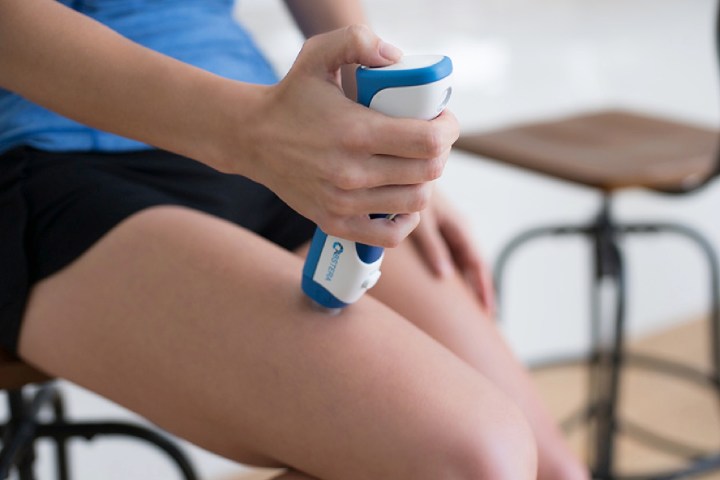
“Portal is developing a next-generation needle-free jet injector,” Barb Taylor, senior director of marketing for Portal Instruments, told Digital Trends. “Jet injection works by applying a high amount of force on a very fine stream of liquid, thinner than a strand of hair, which can then pierce the skin.”
The smart injection tool, called Prime, fires out the injectable solution as a jet at a pace of around Mach 0.7, the cruising speed of an average commercial airliner. Far from uncontrolled, however, the device actually monitors its injection velocity up to 1,000 times in the half second it takes to administer a 1-milliliter dose. This high level of control allows the device to expertly target specific skin depths and locations for exact drug doses.
“Our goal at Portal is to transform the experience for patients who have to regularly take life-changing drugs,” Taylor continued. “Many people are afraid of needles, or even if they are not afraid, per se, have a hesitation [about] taking an injection and have anxiety about the whole experience. Many people have to take regular injections for chronic conditions. For people who have to take self-injections on a regular basis, Portal would like to improve their experience by removing the needle and all the anxiety that accompanies [it].”
While there’s no publicly announced timetable for Portal’s smart injection tech, the startup has just announced that it is teaming up with Japanese pharmaceutical giant Takeda to further develop the technology and bring it to market.
Now if only they could work out how to combine it with other MIT research — allowing for multiple doses of a drug or vaccine to be combined into just one long-lasting jab — we’d never have to flinch at the thought of getting our winter jab again!


